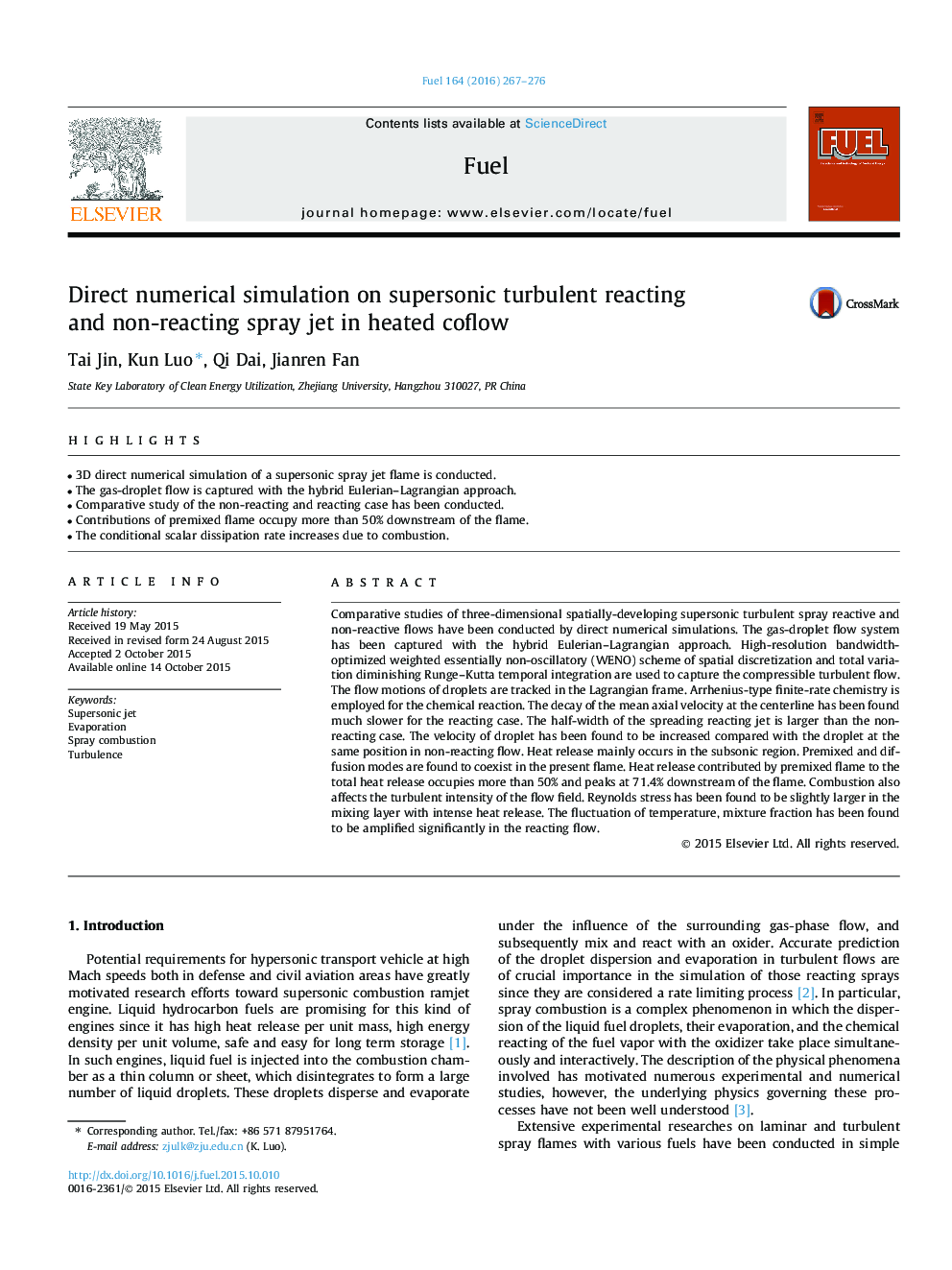| کد مقاله | کد نشریه | سال انتشار | مقاله انگلیسی | نسخه تمام متن |
|---|---|---|---|---|
| 205398 | 461107 | 2016 | 10 صفحه PDF | دانلود رایگان |
• 3D direct numerical simulation of a supersonic spray jet flame is conducted.
• The gas-droplet flow is captured with the hybrid Eulerian–Lagrangian approach.
• Comparative study of the non-reacting and reacting case has been conducted.
• Contributions of premixed flame occupy more than 50% downstream of the flame.
• The conditional scalar dissipation rate increases due to combustion.
Comparative studies of three-dimensional spatially-developing supersonic turbulent spray reactive and non-reactive flows have been conducted by direct numerical simulations. The gas-droplet flow system has been captured with the hybrid Eulerian–Lagrangian approach. High-resolution bandwidth-optimized weighted essentially non-oscillatory (WENO) scheme of spatial discretization and total variation diminishing Runge–Kutta temporal integration are used to capture the compressible turbulent flow. The flow motions of droplets are tracked in the Lagrangian frame. Arrhenius-type finite-rate chemistry is employed for the chemical reaction. The decay of the mean axial velocity at the centerline has been found much slower for the reacting case. The half-width of the spreading reacting jet is larger than the non-reacting case. The velocity of droplet has been found to be increased compared with the droplet at the same position in non-reacting flow. Heat release mainly occurs in the subsonic region. Premixed and diffusion modes are found to coexist in the present flame. Heat release contributed by premixed flame to the total heat release occupies more than 50% and peaks at 71.4% downstream of the flame. Combustion also affects the turbulent intensity of the flow field. Reynolds stress has been found to be slightly larger in the mixing layer with intense heat release. The fluctuation of temperature, mixture fraction has been found to be amplified significantly in the reacting flow.
Journal: Fuel - Volume 164, 15 January 2016, Pages 267–276
